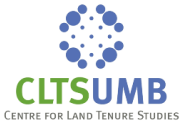No 3/19: The Devil is in the Details: Risk Preferences, Choice List Design, and Measurement Error
Stein T. Holden () and Mesfin Tilahun ()
Additional contact information
Stein T. Holden: Centre for Land Tenure Studies, Norwegian University of Life Sciences, Postal: Centre for Land Tenure Studies, Norwegian University of Life Sciences, P.O. Box 5003, NO-1432 Aas, Norway
Mesfin Tilahun: Centre for Land Tenure Studies, Norwegian University of Life Sciences, Postal: Centre for Land Tenure Studies, Norwegian University of Life Sciences, P.O. Box 5003, NO-1432 Aas, Norway
Abstract: We use a field experiment to estimate the risk preferences of 945 youth and young adult members of 116 rural business groups organized as primary cooperatives in a semi-arid risky environment in northern Ethiopia. Multiple Choice Lists with binary choices between risky prospects and varying safe amounts are used to identify the certainty equivalent for each risky prospect. Rank Dependent Utility Models with alternatively Wilcox’ (2011) Contextual Utility or Busemeyer and Townsend (1992, 1993) Decision Field Theory heteroskedastic error specifications are used to estimate risk preference parameters and parametrized model noise. The study aims to a) assess potential biases associated with Choice List design; b) assess a time-saving elicitation method; c) inspect the predictive power of the predicted risk preference parameters for respondents’ investment, income and endowment variables; d) assess how the predictive power is associated with model noise and the addition of two low probability high outcome risky prospects that may help to capture utility curvature more accurately. Substantial risk parameter sensitivity to Choice List design was detected. The rapid elicitation method appears attractive as it facilitates use of a larger number of Choice Lists with variable attributes although it is sensitive to bias due to random error associated with randomized starting points. The addition of the two Choice Lists with low probability high outcomes substantially enhanced the explanatory power of the predicted risk preference parameters and resulted in substantially higher estimates of the utility curvature parameter.
Keywords: Risk preferences; rank dependent utility; probability weighting; measurement error; predictive power; field experiment; Ethiopia
JEL-codes: C90; C93; D14; D81; D90
50 pages, First version: May 1, 2019. Revised: October 16, 2019. Earlier revisions: May 15, 2019.
Full text files
40386Full text
Questions (including download problems) about the papers in this series should be directed to Sarah Ephrida Tione ()
Report other problems with accessing this service to Sune Karlsson ().
RePEc:hhs:nlsclt:2019_003This page generated on 2024-09-13 22:16:27.

